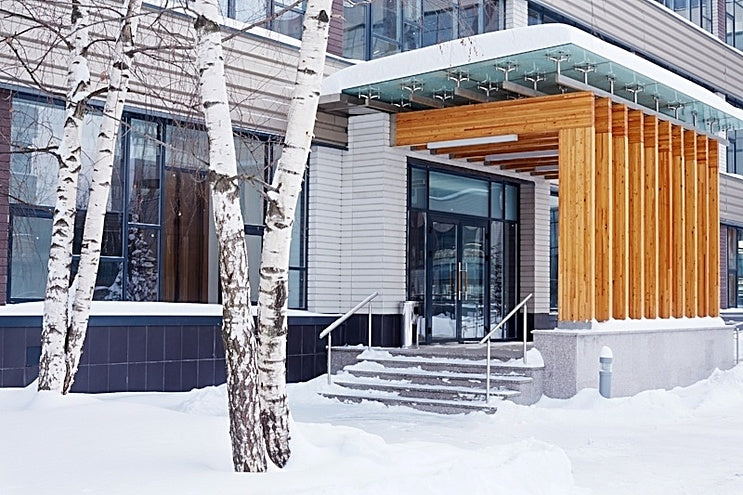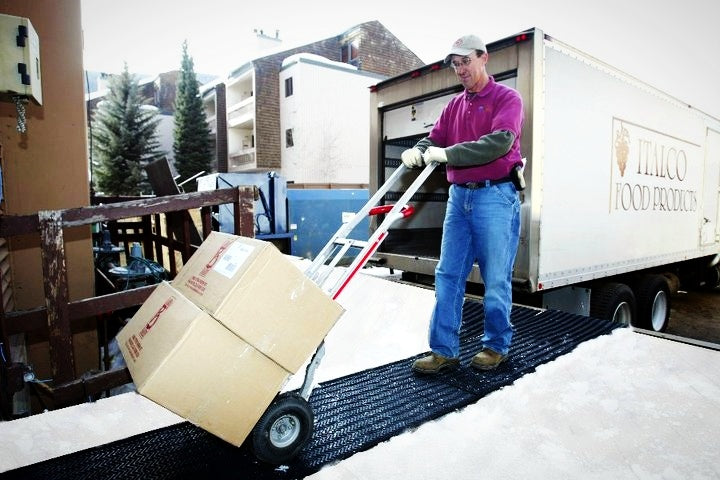 Preparedness is key when getting ready for winter conditions. Whether you’re the Director of Maintenance or a Commercial Property Manager, it’s never too early to prepare – especially in the event of a freak storm that surprises everyone.
Preparedness is key when getting ready for winter conditions. Whether you’re the Director of Maintenance or a Commercial Property Manager, it’s never too early to prepare – especially in the event of a freak storm that surprises everyone.
The removal of snow and ice around a commercial property is critical to operations. But just as important is an organized plan to provide safety and security for tenants, employees, and visitors. Failure to do so can have some dire consequences.
Keeping your building (or facility) “open for business” during winter weather is a primary goal for any operations team. Another priority is keeping sidewalks and walkways safe. This is where snow melting equipment plays an important role.
The snow and ice are coming! That’s why fall is ideal for assessing needs, acquiring resources, and creating a preparedness plan. An early start will also pinpoint deficiencies to be remedied.
Every Property Manager understands the importance of being ready for winter, particularly the aspect of being safety compliant. Poor implementation will present potential risks (and costs).
In any commercial property, risk management implores a sound preparedness plan. Bad timing or poor planning simply costs money. Worse still, an unsafe environment poses serious hazards.
A Top Ten List for a Winter Preparedness Plan
Whether you’re managing a property internally, or contracting out services, a comprehensive Winter Preparedness Plan is essential to operations. The upfront investment is well worthwhile.
-
Create a slip and fall prevention protocol
A slip, trip, and fall prevention protocol should represent all aspects of your unique operation. As well, the protocol should be tailored to comply with industry standards and legal requirements.
-
Ensure snow removal efforts are suitable
Without question, snow removal must be dependable and unfailing. The service provider must understand the needs of the property, be well equipped, and provide highly experienced teams.
-
Plan for sidewalks/entries to be ice-free
City-specific bylaws clearly dictate your legal responsibilities and your liability obligations. That means NO shortcuts when clearing snow and ice from sidewalks, walkways, and/or entryways.
-
Stockpile salt and/or ice-melt products
Today, ice melt products are more advanced than ever – they are effective, immediate, and safe. Safe for people, pets, and plants, the higher quality products also ensure less application waste.
-
Snow blowers, tools, equipment ready
Winter maintenance equipment should be checked, serviced, and repaired well in advance of the first winter weather event. Being prepared saves on operational costs as well as ownership costs.
-
Exterior lights for maximum illumination
With fewer daylight hours throughout the winter, maximum outdoor illumination is critical in a commercial setting. Preventive maintenance is key to keeping customers and employees safe.
-
Roof drainage/downspouts in good order
A viable preventive maintenance plan for roofing and drainage is about being proactive. You’ll identify potential issues early, and you’ll address snow accumulation and ice damming head on.
-
Prevent water drainage over walkways
Beyond city bylaws and insurance liabilities, maintaining proper surface drainage also prevents structural damage to your property. Failure to properly maintain is a recipe for costly problems.
-
Design a comprehensive Emergency Plan
By law, commercial property owners must comply with regulations for a Public Emergency Plan. Here, a proactive budget will outweigh hazardous impact, property damage, and even cost of life.
-
Create a fool proof Loss of Power Plan
Loss of power simply means loss of business – whether you’re operating a retail property or a commercial building. The ideal Loss of Power Plan is an on-site emergency power backup system.
Maintaining Control Over Winter Snow and Ice
Property managers with a proactive approach to winter are most successful. To succeed, you must have good systems in place, a qualified team, and the latest snow melting equipment.
Good planning means your facility will be “open for business” even during inclement weather. In the most severe of conditions, you’ll be ahead of the game, and back on track sooner than others.
Protecting your tenants, visitors, and employees
With the unpredictability of snow and ice, conventional shoveling, salting, and de-icing may be enough. However, there may be times when other snow melting equipment will be required.
For tenants, visitors, and employees, snow-melting mats are effective in preventing both snow accumulation and ice build-up. They are durable enough to withstand heavy pedestrian traffic.
While traditional salting (and de-icing chemicals) take a serious toll on outdoor walkways (and indoor flooring), snow-melting mats reduce salt damage and lessen on-going maintenance costs.


